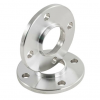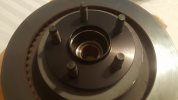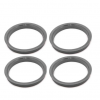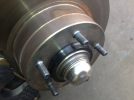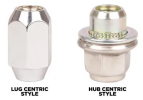Correct, although how much effect it has beyond assuring the wheel is centered during installation, has been debated. I'm dubious about it's involvement in holding the wheel in place once everything is tight.
The principle force is applied against the face of the hub and the face of the wheel by the draw strength of the lugs/nuts. In order for the wheel to impart load onto the studs and/or hub lip it has to overcome the friction between the two. I've heard arguments for both sides saying the lip of the hub experiences little to no load because the face and lugs is where it's applied
I haven't gone into my software to explore this (it's not as easy as just plugging it in), but intuition seems to support this argument against the lip being much more than an install aid. Especially when I see aluminum hubcentric spacers that have a 1/4" of material sticking out. A thin little lip of aluminum doesn't instill a sense of structural integrity to me (I could deform/break that off with a hammer) so it sure seems to be an installation aid more than anything.
That said, all the force isn't on the lip, and it's not the same kind of force as hitting it with a hammer. I don't want say it's not doing anything because I don't know for sure, but if the lug nuts are tapered (or conical to be specific) the wheel should center around them (ie lug centric) and I suspect any clearance between the hub and wheel will be evenly distributed around that lip so it may not even be touching once the nuts are tight. Even if there is no clearance and the wheel and hub lip are in contact with each other, the wheel shouldn't be able to "shift" and impart load onto the lip because the studs and the two faces would be holding the wheel in place.
Again just shooting form the hip, talking through a hypothesis based on design aspects. Maybe one day I'll take the time to draw one up and to see if the physics simulation shows any load on the lip. I suspect it will be negligible if at all.
But you are correct, adding a thick spacer eliminates any effect the lip would have, including the installation aid if the spacer is too thick.


